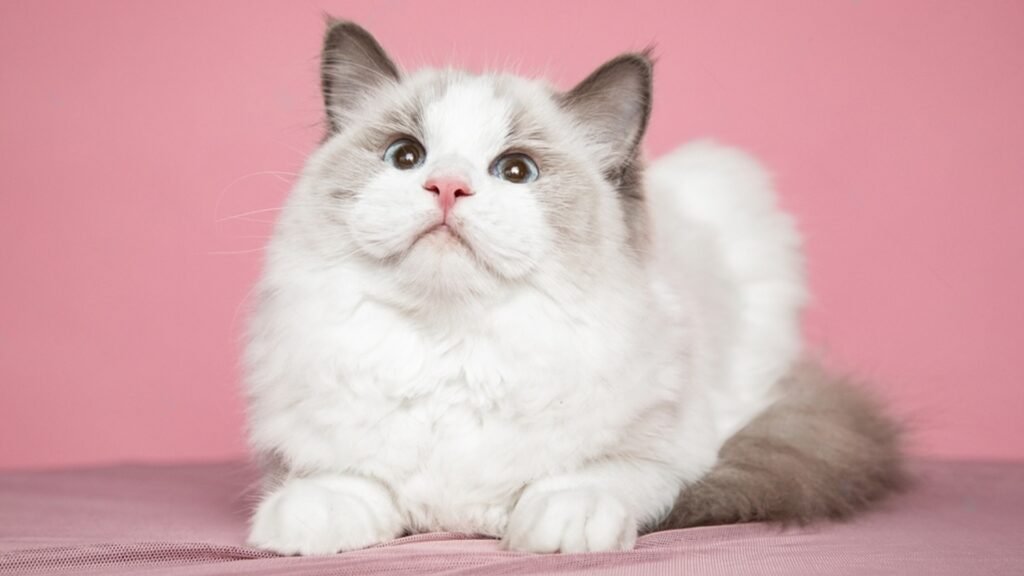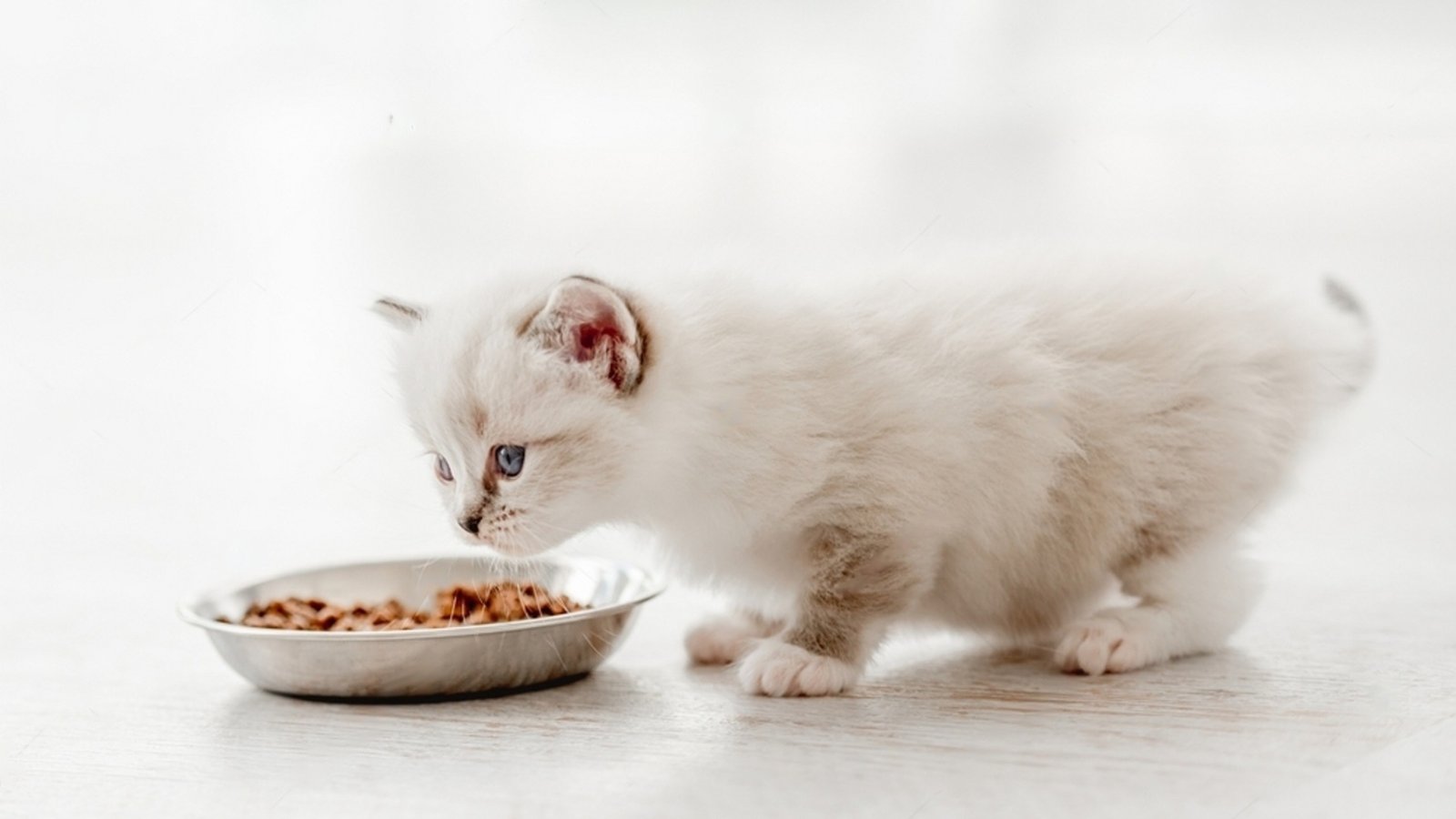From stealing your seat the moment you stood up to head-butting your phone out of your hand, your ragdoll cat likely inspects more household tasks than your inner critic. Being so people-oriented, most ragdoll owners are compelled to reckon if it is OK to leave a ragdoll cat home alone, and if so then how long?
Well, the fact is, ragdoll cats are often made out to be highly dependent though they are more independent than many assume. Healthy adult ragdolls often do fine alone for around 8 hours a day as long as they have access to food, clean litter, fresh water, and a toy or two they like most.
Ragdoll kittens however shouldn’t be left alone for more than 4 hours. If you can’t manage your work schedule according to it, ragdoll cat isn’t for you. Prolonged isolation could trigger separation anxiety in your kitty which BTW no ragdoll owner wants to deal with.
How To Tell If Your Ragdoll Cat Is Lonely

Ragdolls are social creatures who crave routine and human interaction. You’ll find these lap cats sleep for a good chunk of the day and are active at night or early morning. This natural rhythm aligns well with an average workday, especially if your ragdoll is accustomed to your routine. Where things start getting worse is when you go out to work for over 12 hours and don’t have family or a spouse at your back to look after your kitty. If your ragdoll is stressed out or lonely because of separation anxiety it starts giving you signs.
Avoiding You
If your once-social ragdoll cat all of a sudden dodges affection, like avoiding your lap, giving cold shoulders, or displaying agitation (flattened ears, tense posture), it’s a red flag. Ragdoll breed is bred to seek companionship, so a shift toward isolation signals stress or separation anxiety.
Hiding For Long Periods
As per their natural instinct, ragdolls do like to hide out now and then though. If it gets longer than usual and your cat retreats to corners, under beds, or hard-to-reach spots for hours, it may indicate they don’t feel safe or secure. This behavior is tied to loneliness, especially if they’re used to frequent human interaction. We suggest consulting a vet to rule out illness since hiding can also mask physical discomfort.
Not Eating
A lonely or stressed Ragdoll cat may stop eating the same food it used to be comfortable with. This lack of appetite is a clear sign of separation anxiety. If they refuse good enough food straight away, it can lead to weight loss, and lethargy, and could damage their overall health. Since Ragdolls are a larger breed (weighing 10–20 lbs) with hearty appetites, not eating properly can have serious consequences.
Excessive Vocalization & Aggression
As an affectionate cat breed, Ragdoll cats are less likely to meow for long periods than other breeds (Siamese, Japanese Bobtail). Loneliness or separation anxiety can manifest in vocalization and aggression. Their noises escalate if stress goes unchecked and you might notice agitation that seems “on and off”.
In rare chances, they even redirect anxiety into aggression like extreme scratching furniture or wrecking household items while you’re gone. If your Ragdoll, typically a social butterfly, has turned on you or others, it’s their way of conveying unhappiness.
Clinginess Or Over-Grooming
Paradoxically, loneliness can also make Ragdolls overly attached. They might shadow you persistently, meow loudly at your departure, or paw at closed doors. While affection is normal, this clinginess often stems from separation anxiety—they’re too eager to “get on” with you because they dread solitude.
Over-grooming is another clue, where your ragdol cat licks itself excessively (especially on the legs or belly). This can lead to bald patches or excessive shedding. Unlike routine grooming, this behavior feels frantic, as if they’re trying to calm themselves down or deal with stress.
How To Keep a Ragdoll Cat Happy While You’re Away

We all need to step out of the house for a few hours, whether it’s for chores, head to work, or something else. In that saying, you can’t just stick around the house all day with your ragdoll cat. What we recommend is finding ways to keep your feline friend content while you’re away. Here’s how you can leave your ragdoll cat alone.
Train Your Cat
Since Ragdolls have docile personalities and laid-back temperaments, and they love to spend quality time with their owners, it’s so easy to train them. You can gradually acclimate your ragdoll cat to your routine from a young age. Begin by leaving them alone for 15 minutes, then slowly extend the time to an hour or two, capping it at 8 hours max for healthy adults. And make sure to be consistent by sticking to predictable departures and returns, so they learn to trust you’ll come back.
Outlet For Stimulation (Interactive Toys)
There are a lot of things you can do to help your Ragdoll overcome their fear of being left alone by distracting them with engaging activities. Interactive toys like feather wands, puzzles, balls, or anything they could catch or bat around can keep them entertained for hours. Ragdolls aren’t overly energetic, though scratching posts or climbing trees help release pent-up energy, which reduces anxious behavior.
Cozy Hideaways
Ragdolls adapt well when their environment feels stable. Set up comfortable spots where your cat can retreat when they want some alone time. This could be as simple as a cardboard box with a door hole cut out, or as elaborate as a multi-level cat condo. An igloo-style cave, high perches, or curtains that your Ragdoll can hide behind all work well. These spaces allow your cat to survey their territory from a safe vantage point, which can be very comforting when you’re not around.
A Window Perch

Ragdolls are mainly overly friendly indoor cat breeds and we don’t even recommend letting them go out on their own (they can get bullied by other stray cats). Having said that, it’s a good idea to keep them in touch with nature by setting up a safe window perch where they could mesmerized by birds, squirrels, and other activities going on outside.
Leave on a TV or Radio
Ragdolls left in pin-drop silence may feel your absence way more sharply. When you depart for your endeavors, leave the TV or radio on at low volume. This helps your raggies feel a little less lonely. You can try different noises like calming music or nature documentaries that mimic the hum of human presence.
Pheromone Diffusers
A cat pheromone diffuser can be very helpful if your Ragdoll seems distressed or lonely when you go out for work. The diffuser basically releases synthetic pheromones that resemble those mother cats emit to soothe kittens. These can ease separation anxiety in distressed Ragdolls and help them stay calmer when you leave them alone at home.
How Long Can You Leave a Ragdoll Kitten Alone?

Ragdoll cats often retain kitten-like manner far longer than most cats cause they reach their adulthood around 4 years. Unlike fully grown ragdolls, kittens require extra care, save space, and shouldn’t be left alone without proper supervision.
If you have a ragdoll kitten under four months of age, you can’t leave them alone for around 4 hours a day. They need frequent feeding (every 4–6 hours), socialization, and safe exploration. At 6+ months, they can manage up to 6 hours alone as long as they have the food, water, and stimulation they need to distract from separation anxiety.
What To Do With Your Ragdoll Cat When You Go on Vacation
It’s obvious, you can’t just leave your ragdoll cat alone for no more than 8 hours. If you plan to go on vacation, you can either take your cat with you, board your cat in a cattery, ask for help from a trusted friend, neighbor, or family member, or hire a professional pet sitter to care for your kittens.
Friends, Family, or Neighbors
If you’re lucky enough to have a loyal friend, trusted neighbor, or family member who lives nearby and can live in your own home until you get back it’s absolutely wonderful. Ragdolls generally get along well with everyone and there’s a good chance they’ll bond with your chosen helper.
This is by the way one of the most cost-effective option too. Your Ragdoll already knows these people, which can make the experience less stressful. They can look in on your cat, feed them, clean the litter box, and provide necessary playtime.
Pet Sitters or Cat Boarding
Hiring a pet sitter is more likely the same as asking your friend or neighbor to look in on your ragdoll cat but with some added perks (and yes, with extra cost too!). This is another great way to leave your ragdoll cat in the safest hands.
Unlike boarding in cattery, hiring a pet sitter lets your ragdoll stay in the safe, familiar home where they feel most comfortable. However, for in-home care, do a trial run with the sitter or friend to iron out any kinks.
In case, you don’t have someone you can turn to, boarding your ragdoll cat in a licensed cattery is still a secure option and the one you can prefer. Make sure your ragdoll kitten has had all of their core vaccination. A reputable cattery has all the facilities your cat needs, from feeding, grooming, and health care to playtime and socialization.
The only downside is if your cat hasn’t been accustomed to cattery stays since kittenhood, this sudden change can be disruptive and put your ragdoll under some degree of stress.
Frequently Asked Questions (FAQs)
Can Ragdoll Cats Be Left Alone?
Healthy adult Ragdolls can handle being alone for 8 hours at most if their needs are met. They’re an affectionate, people-oriented breed that craves companionship much like we do. Periodic prolonged isolation may lead to boredom or separation anxiety.
Is It Okay to Have Just One Ragdoll Cat?
Most people reckon having two ragdolls would let them leave them alone in better shape than having one. To some extent, the idea makes sense, though having another cat won’t fill the human interaction gap and even doubles the cost and responsibility.
Do Ragdoll Cats Get Lonely Easily?
Ragdolls are as goofy and sociable as cats can get. These floppy cats often like to cuddle next to you on the sofa, chase you from room to room, and simply do better if you spend much of your spare time with them. Their highly social nature and craving for human interaction means they can get lonely if left alone for too long (8+ hours or in the worst case 12+ hours).
How Can I Keep My Ragdoll Cat Safe at Home Alone?
If you leave ragdoll cat alone, make sure to kitten-proof your home to avoid injury or big trouble. Top off their favorite spot with the right essentials (food, water bowl, fresh litter box, interactive toys, scratching posts) and remove any toxic indoor houseplants, loose cords, and sharp objects.
Wrapping Up…
We do hope that if you have reached this point by reading through our guide you clearly get the answer to “How long can you leave a ragdoll cat alone” Can they get separation anxiety? What signs do they show to you when they feel lonely? And how to overcome their fear of separation to the greatest extent. If you live solo try not to break the 8-hour rule for adult ragdolls and 4 hours for kitten ragdolls. Equally important, Leave them with an ample supply of food, water, toys, and stimulation to keep their minds occupied.
Written By: Usman Malik | Reviewed By: Ali Abbas | Fact Checked By: Aqib Zulfiqar







